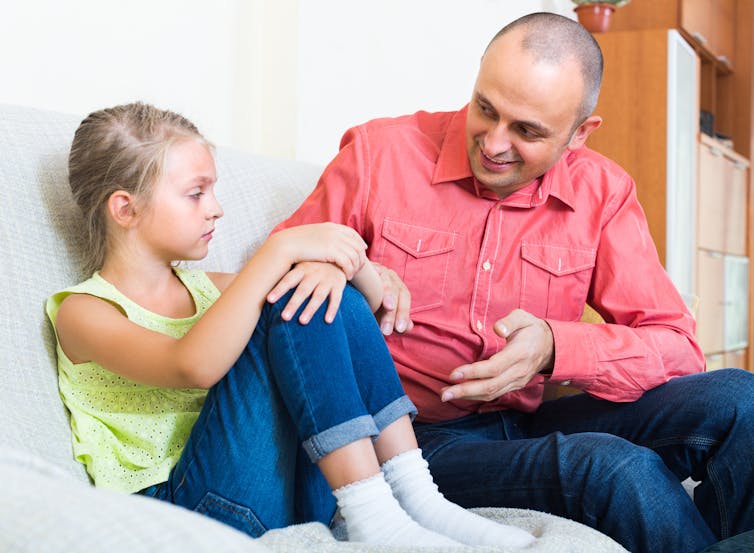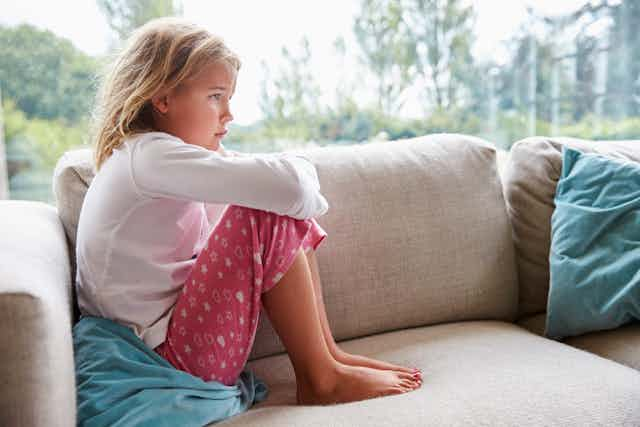There’s been a big rise in the number of young people seeking help for their anxieties, according to Childline. The telephone counselling service has suggested exposure to social media reports on global issues such as Brexit and the war in Syria may be behind the 35% increase in the number of calls it receives from anxious children.
Yet while some may see this as further evidence of a wider mental health crisis among young people, it’s important to remember that worrying is a normal part of life. Kids usually learn to cope with worries as they grow up, but worrying can also enhance problem-solving skills in children.
My colleagues and I have been examining data from the “Children of the 90s” study, which has been following a large group of families for over 25 years. We’ve found that it’s common for children to worry frequently, often more so than adolescents.
These worries during childhood are a normal part of growing up and tend to lessen naturally over time as children learn more ways to deal with them. The reason to be concerned about your child’s worries would be when these high anxiety levels carry on into adolescence and interrupt daily life.
The Children of the 90s study – or Avon Longitudinal Study of Parents and Children (ALSPAC) – involves a large group of children born in the Bristol area in the early 1990s. At several stages throughout the children’s development, their mothers were asked to complete questionnaires about themselves and their kids. We looked at over 2,200 families to see how mothers rated their children’s worries at the ages of 7, 10 and 13.

We found that the pivotal age for childhood worries was 10 years. This was when mothers reported their children worried most often and had a low ability to control those worries. Unsurprisingly, these worries mainly concerned troubling thoughts about schoolwork. Worries about bad things happening to others and the future were also prevalent at this age. However, these worries didn’t necessarily impact the daily activities of the 10-year-olds studied, such as their ability to play with friends, attend school or play sports.
For 13-year-olds, the mothers reported that their children worried less frequently and had better control over worries compared to when they were 10 years old. But worrisome thoughts at 13 were more likely to impact daily activities and cause emotional distress, particularly for girls. This interruption of daily activities should be taken seriously.
Although the 10-year-olds worried more often and had less control, because the anxiety didn’t interfere with their daily activities, it can be considered a normal part of growing up. While it’s important to acknowledge children’s worries and reassure them that things are okay, children at this age who worry about what’s going on in the world aren’t necessarily a cause for concern.
When to worry
But if anxiety starts to disrupt your child’s daily life, this may be key to identifying potentially problematic worries. Our research found that this is most likely to happen during early adolescence and occurs more often in girls compared to boys.
Other data from the Children of the 90s study showed that 17-year-olds who experienced high levels of anxiety due to pain and disability were more likely to have had higher levels of worries at age 13. This suggests a link between anxiety during early adolescence and later life.
So, while we shouldn’t immediately worry if our kids get anxious about what’s going on in the world, it’s still important to be aware of how they cope with these worries as they grow up. Being aware of anxiety early on and giving young people the tools to deal with their worries can help prevent more serious problems later on in life.

